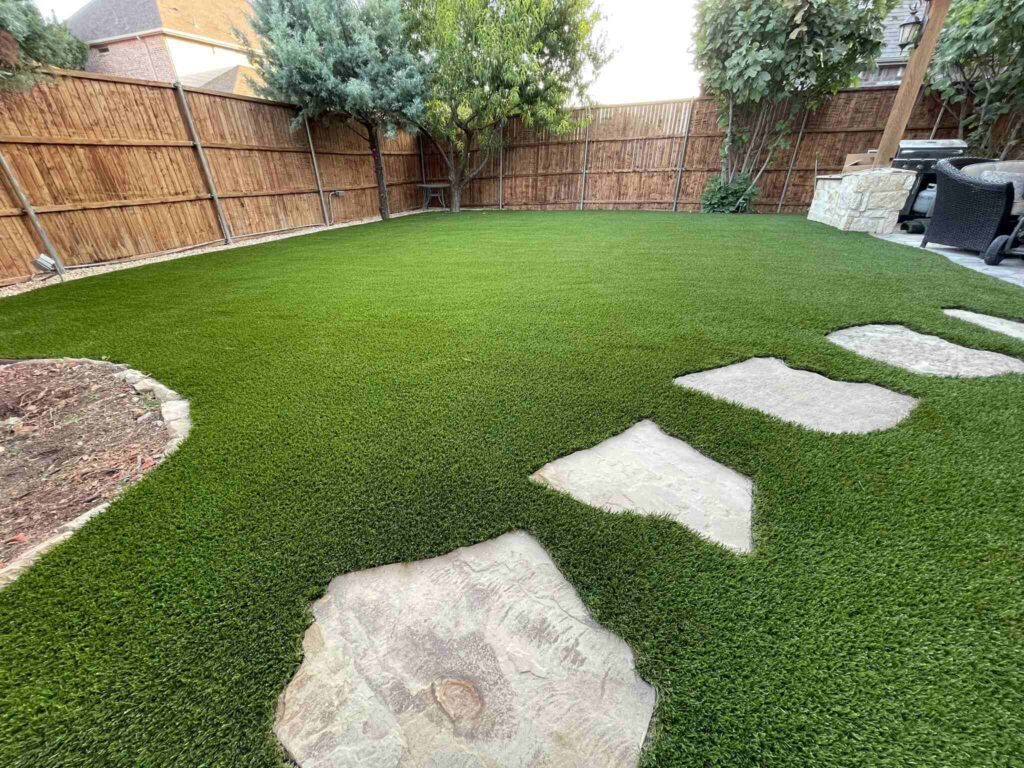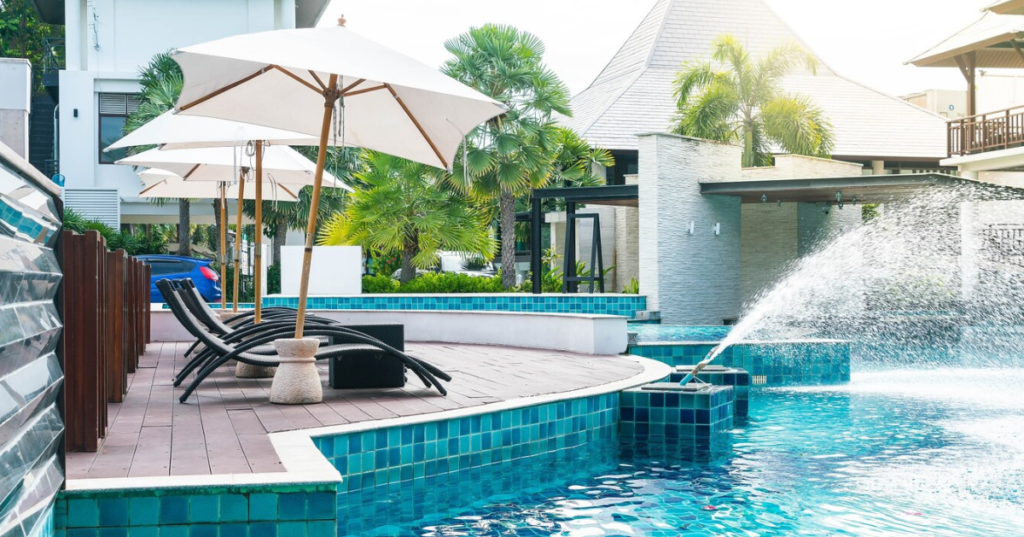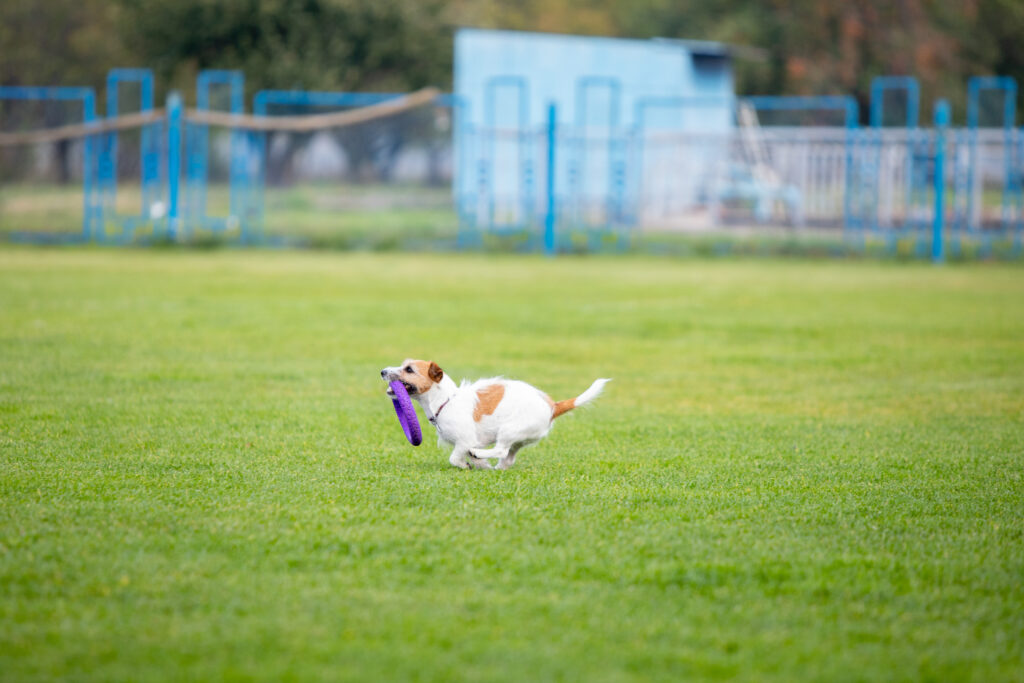Yes, you can lay decking on top of artificial grass, but there are several factors to consider for optimal results. First and foremost, using a sturdy substructure is crucial; raising the decking slightly above the grass can help prevent any potential moisture problems beneath. This setup will not only protect your artificial turf from heavy weight compression but also allow for better drainage—an essential factor in maintaining both the integrity of your decking and the condition of your lawn underneath.
Additionally, think about potential movement or shifting that might occur over time. Fixing down your decking securely can mitigate any risk of wobbling or misalignment, which could otherwise damage the synthetic fibers or disrupt their aesthetic appeal. If you’re aiming to create beautiful outdoor spaces without sacrificing maintenance work down the line, placing decorative pavers between deck boards can offer a stunning contrast while also preserving your greenery’s pristine state. Ultimately, this thoughtful approach will enable you to enjoy both seamless living areas and vibrant garden aesthetics simultaneously!
When it comes to creating a beautiful outdoor space, many homeowners are combining two popular landscaping options—decking and artificial grass. But can you lay decking on top of artificial grass? If you’re curious about this innovative approach, you’re not alone. This blog post will guide you through the possibilities and considerations of laying decking on artificial grass, providing valuable insights for homeowners seeking to enhance their outdoor areas.
Table of Content
- Understanding the Basics of Decking and Artificial Grass
- The Appeal of Combining Decking and Artificial Grass
- Can you lay decking on top of artificial grass in winter
- Benefits of Laying Decking Over Artificial Grass
- Assessing the Condition of Your Artificial Grass
- Necessary Preparations Before You Begin
- Choosing the Right Decking Materials
- Design Considerations for Your Deck
- Tools and Equipment You’ll Need
- Step-by-Step Guide to Laying Decking
- Ensuring Stability and Safety
- Maintaining Your New Decking
- Common Mistakes to Avoid
- Alternatives to Laying Decking on Artificial Grass
- Frequently Asked Questions
- Advantages and Disadvantages
- Next Steps for Your Outdoor Project.
Understanding the Basics of Decking and Artificial Grass
Before combining decking with artificial grass, it’s important to understand what each element brings to your outdoor space. Decking creates a solid, elevated platform that offers a visually appealing area for relaxation and entertaining. It’s available in various materials like wood, composite, and plastic, allowing homeowners to choose according to their taste and budget.
Artificial grass is a synthetic alternative to natural grass, designed to mimic its appearance and feel. It’s made from a variety of synthetic fibers, usually polyethylene or polypropylene, which are tufted into a backing and sometimes infilled with sand or rubber granules for stability.
Unlike natural grass, it doesn’t require watering, mowing, or fertilizing, making it an attractive option for those looking to save time and resources. Additionally, artificial grass is durable and can withstand heavy use, ideal for families with kids or pets.
For instance, artificial grass can retain heat more than natural grass, making it uncomfortable during hotter weather. It also requires occasional cleaning to remove debris and odors, especially if
The Appeal of Combining Decking and Artificial Grass
Combining decking with artificial grass offers a unique aesthetic that balances natural and modern elements. It allows you to create distinct zones within your garden, catering to different activities and preferences. For example, you can designate a decking area for dining and socializing, while the artificial grass offers a soft surface for play or relaxation.
Another advantage is the ease of maintenance. Artificial grass eliminates the need for lawn care, and with proper installation, decking requires minimal upkeep. Together, they form a durable and attractive outdoor area that can withstand heavy foot traffic and fluctuating weather conditions.
Can you lay decking on top of artificial grass in winter?
Laying decking over artificial grass during winter presents a unique set of challenges and benefits that homeowners might overlook. One significant advantage is insulation; the synthetic fibers of the grass can help retain warmth, preventing frost from forming directly on your deck. This not only makes it safer to walk on but could also potentially prolong the life of both your decking and grass as it creates a protective barrier against extreme cold.
However, it’s essential to consider drainage and moisture accumulation when undertaking this project. Without proper air circulation, trapped water can lead to mold or mildew growth under the decking. To mitigate these risks, elevating the deck slightly using spacers or pedestals allows for adequate airflow while still giving you that sought-after seamless look over your garden’s backdrop. Ultimately, with careful planning and attention to detail, laying decking on artificial grass in winter can transform an outdoor space into a cozy retreat for chilly evenings spent enjoying nature’s beauty from a warm vantage point.
Benefits of Laying Decking Over Artificial Grass
Laying decking over artificial grass can bring a host of benefits to your outdoor area. First and foremost, it adds versatility to your space. Decking provides a solid, level surface that is perfect for dining sets, loungers, or even a summer barbecue setup.
The combination of artificial grass with decking can also enhance the aesthetic appeal of your garden. The soft greenery contrasts beautifully with the wooden or composite decking, creating a visually pleasing environment. This setup can increase the perceived value of your home, as it looks more polished and well-thought-out.
Additionally, decking over artificial grass can be a great solution for uneven or sloped areas. The deck can be constructed to sit level, overcoming the challenges of an uneven lawn. This not only makes the space more usable but also safer for family and friends.
Assessing the Condition of Your Artificial Grass
Before starting your decking project, it’s crucial to assess the current state of your artificial grass. Check for any visible damage, such as tears or worn-out spots, that may need repair before laying decking on top. Ensuring the grass is in good condition will help provide a stable foundation for your decking.
If your artificial grass is relatively new and well-installed, it should be level and free of significant wear. However, if it’s been in place for several years, you may need to address issues like drainage before proceeding. Poor drainage can lead to water pooling under your decking, potentially causing damage over time.
It’s also wise to consider the type of backing your artificial grass has. Some backings may compress under the weight of decking, affecting stability. In such cases, laying a sub-base material between the grass and decking can help distribute weight more evenly.
Necessary Preparations Before You Begin
Preparation is key to the success of laying decking over artificial grass. Accurate measurements will help you purchase the right amount of decking material and avoid unnecessary waste.
Next, clear the area of any debris or furniture to ensure a clean workspace. It’s also a good idea to check the local building regulations or guidelines related to decking installation. This will help you avoid any legal issues and ensure your project adheres to safety standards.
Consider laying a weed barrier fabric over the artificial grass before starting the decking installation. This can prevent weeds from growing through and affecting the durability of your deck. Additionally, if your artificial grass has an infill, you may need to remove some of it to create a more stable base.
Choosing the Right Decking Materials
The success of your decking project depends significantly on the materials you choose. Traditional wood decking is a popular option due to its classic appearance and natural feel. However, it requires regular maintenance to prevent rot and weather damage.
Composite decking is an excellent alternative, offering the beauty of wood with fewer maintenance demands. Made from a mix of wood fibers and plastic, composite decking is resistant to rot, insects, and wear. It’s also available in a variety of colors and finishes, allowing you to customize the look of your deck.
If sustainability is a priority, consider eco-friendly decking materials made from recycled plastics or sustainably sourced wood.
Design Considerations for Your Deck
Designing your deck involves more than just choosing materials; it’s about creating a functional and aesthetically pleasing space. Start by considering how you plan to use the deck. Will it serve as a dining area, a relaxation spot, or a play zone for kids?
The layout and size of your deck should align with its intended use. For instance, if you’re planning a dining area, ensure there’s enough space for a table and chairs, along with room to move around comfortably. Consider adding built-in seating or planters to maximize space and enhance aesthetics.
Don’t forget about lighting and privacy. Incorporating outdoor lighting can extend the usability of your deck into the evening, while privacy screens can make the space feel more intimate and secluded. Both elements contribute to a more enjoyable outdoor living experience.
Tools and Equipment You’ll Need
To lay decking over artificial grass, you’ll need a range of tools and equipment. Essential items include a tape measure, a spirit level, a power drill, and a saw. These tools will help you measure, cut, and assemble the decking with precision.
Additionally, you’ll require decking screws, brackets, and possibly a post-hole digger if you’re installing support posts. A carpenter’s square and chalk line are also helpful for ensuring straight lines and accurate angles.
Don’t forget safety gear, such as gloves, goggles, and ear protection. Working with power tools can be dangerous, so taking appropriate safety precautions is vital.
Step-by-Step Guide to Laying Decking
Laying decking over artificial grass involves several steps. First, prepare the area by cleaning it thoroughly and laying a weed barrier fabric if necessary. Then, decide on the orientation and layout of your decking boards.
Next, build the frame for your decking. Use treated timber or composite joists to create a sturdy frame, securing them with screws and brackets. Ensure the frame is level and properly aligned using a spirit level.
Once the frame is complete, lay the decking boards perpendicular to the joists, securing each board with screws. Leave small gaps between boards to allow for expansion and drainage. Finally, add any finishing touches, such as edging or trim, for a polished look.
Ensuring Stability and Safety
Stability and safety are critical when laying decking over artificial grass. To ensure your deck is stable, use quality materials and proper construction techniques. This includes using the right type of joists and securing all connections with appropriate hardware.
Consider adding support posts if your deck is elevated or covers a large area. These posts provide additional stability and prevent sagging over time. Ensure all posts are set in concrete and properly aligned for maximum support.
Safety features, such as non-slip coatings or textured decking boards, can prevent accidents, especially in wet conditions. Regularly inspect your deck for any signs of wear or damage and address issues promptly to maintain safety.
Maintaining Your New Decking
Once your decking is installed, regular maintenance will keep it looking great and extend its lifespan. For wood decking, this includes sealing or staining every few years to protect against moisture and UV damage.
Composite decking requires less maintenance, but it’s still essential to clean it periodically to remove dirt and debris. Use a mild soap and water solution or a specialized decking cleaner for best results.
Inspect your decking regularly for signs of wear, such as loose boards or nails. Promptly addressing these issues will prevent further damage and maintain the deck’s structural integrity.
Common Mistakes to Avoid
When laying decking over artificial grass, avoid common mistakes that can compromise the project’s success. One such mistake is failing to prepare the site adequately. Ensure the grass is in good condition, and lay a proper foundation for stability.
Another common error is neglecting drainage. Without adequate drainage, water can pool under the decking, leading to rot or mold. Ensure proper spacing between boards and consider a slight slope for water runoff.
Finally, don’t rush the installation process. Take the time to measure accurately and construct a solid frame. This attention to detail will result in a more durable and attractive deck that adds value to your outdoor space.
Alternatives to Laying Decking on Artificial Grass
While laying decking on artificial grass is a feasible option, there are alternative approaches to achieving a similar aesthetic without compromising drainage or stability.
Separate Decking and Grass Areas
One alternative is to create separate sections for decking and artificial grass. This involves installing decking adjacent to the artificial grass, allowing for proper drainage and reducing the risk of water damage.
Elevated Decking Platforms
Consider elevating the decking on platforms or stilt-like structures, allowing for airflow beneath and preventing water buildup. This approach not only addresses potential drainage issues but also adds an element of depth to your outdoor design.
Interlocking Deck Tiles
Interlocking deck tiles offer a flexible solution for those seeking a temporary or easily adjustable option. These tiles can be placed on top of artificial grass without the need for a permanent framework, offering a versatile and cost-effective alternative.
Frequently Asked Questions
Can I lay decking directly on artificial grass?
While it’s possible, it’s not recommended without proper preparation. Laying directly on grass can lead to instability and drainage issues. A solid foundation, such as a frame or sub-base, is advised.
Do I need planning permission to add decking over artificial grass?
In most cases, no. However, it’s always best to check with local authorities or homeowners’ associations to ensure compliance with regulations.
How long will decking over artificial grass last?
With proper materials and maintenance, your decking can last 10-15 years or more.
Advantages and Disadvantages
Laying decking over artificial grass offers several advantages. It can transform your outdoor space into a versatile, visually appealing area that enhances property value. It also provides a level surface for various activities, overcoming uneven terrain challenges.
However, there are some disadvantages to consider. The initial cost can be high, especially if using premium materials.
Overall, the benefits often outweigh the downsides, making decking over artificial grass a worthwhile investment for many homeowners.
Next Steps for Your Outdoor Project
Now that you understand the process of laying decking over artificial grass, it’s time to take action. Start by assessing your existing grass and planning your deck’s design. Choose quality materials that suit your budget and style preferences.
If you’re unsure about any aspect of this project, consider consulting a professional for guidance. They can provide valuable insights and ensure the finished product meets your expectations.
Finally, enjoy the fruits of your labor. A well-designed deck over artificial grass can transform your outdoor space into a functional and beautiful retreat for years to come. Happy decking!






 Develop By Yasin
Develop By Yasin